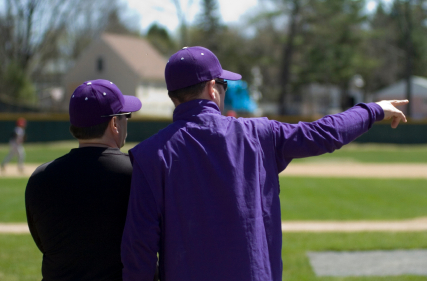Last week I held a tryout for the team I'll coach next spring. All-in-all it went okay for my first attempt at organizing one of these assessments, but I underestimated the amount of orchestration and thought required to support the process flow. It may have looked fine to the participating families, but to me it never felt easy, comfortable, or the way I thought it would.
I imagined having a clipboard in hand, calmly making notes about each player that would magically develop into a numerical analysis of the perfect four or five players to select. Maybe that happens in Hollywood, but not in Denver. At least not last week.
Pushy parent
I got to the field 20 minutes early to set up. I had registration forms, stickers with numbers on them, a box of pens, several evaluation sheets full of columns of numbers aching to be circled, a bucket of balls, bases, a pitching rubber, my glove, and my wood fungo bat. I'm sure I resembled a miner's pack mule as I gathered up this pile of gear in the parking lot. It was quite a load. As I slammed the trunk closed, I met my first participant and his dad. So much for the head start.
The dad started talking and, frankly, wouldn't shut up. Empty-handed, he watched me juggle the equipment load, never offering to carry anything on the 150-yard trek to the field. He told me his hitting philosophy and which pro players also used that strategy. He gave me the behind-the-scenes tour of three camps his son had been to in the last six months, providing dirt on at least one major leaguer. I think I only got in two or three words by the time we got to the field, and the chatter box kept talking as I started to set things up. He was oblivious to every non-verbal and verbal cue I was sending: shut up and let me get organized!
Seemingly unaware that I would soon have at least 25 kids and parents descending on the field expecting order and instructions, he proceeded to tell me what a tremendous athlete his son was. Hands down he was the best player on his previous team. Dad wasn't sure if it was this kid's exceptional talent or his own expertise as a pitching coach that now enabled a 11-year-old to throw a devastating curve ball. Apparently a former pro-player had seen him pitch and was convinced that he has a real shot at playing college ball. Tragically, the only devastation I could envision coming from the curve ball of any 11-year-old was going to be the poor kid's shoulder and elbow by the time he turns 15. College ball is a long, long way off if you can't straighten your arm.
I put down my bag and the bucket of balls and began to make piles of the registration forms, numbers, pens and other materials we'd soon need. Dad, meanwhile, continued the monologue, describing in detail five awful things about his previous coach and why they decided to leave the team. I was about to gnaw off a limb to get away from this guy when my assistant coaches Robert and Sam unwittingly came to my rescue; I was elated to introduce the three of them and quickly escape to the other side of the fence to finish setting up. Sam kept shooting me, "What did I ever do to you?" looks, but at least one of us was free.
Despite the pain of this conversation, I realized my job was already a little easier . . . I had just made a decision on one of the 25 kids. Thanks but no thanks, dad. I didn't even need to see the kid put on his glove to know that this wasn't going to work. Nothing I did would be good enough for dad. No matter how much we might talk about equal playing time, the first time his son was rotated to the bench, I'd get a visit from the stands. The ensuing conversation would make the one I just had with the guy seem pleasant by comparison. It's better to remove such a landmine immediately than try to maneuver the other 10 kids around it.








